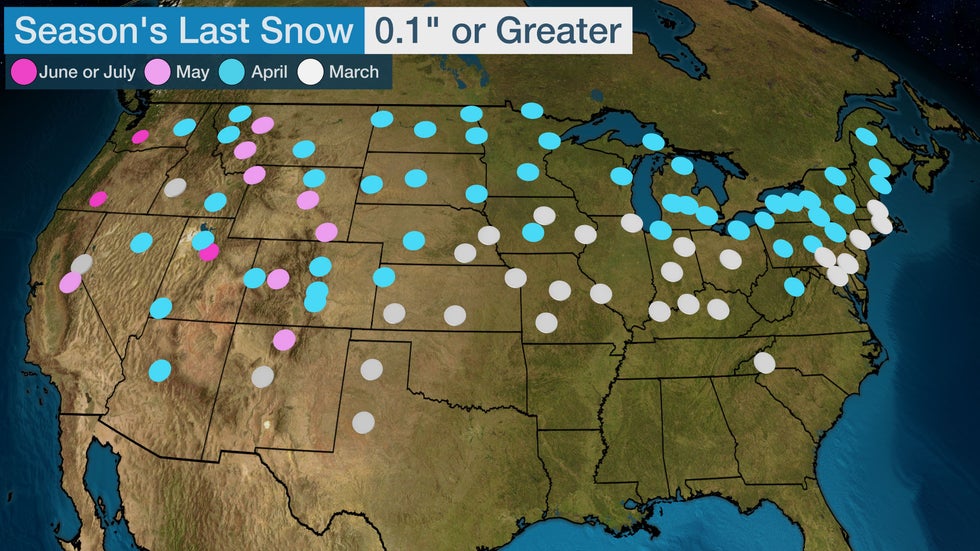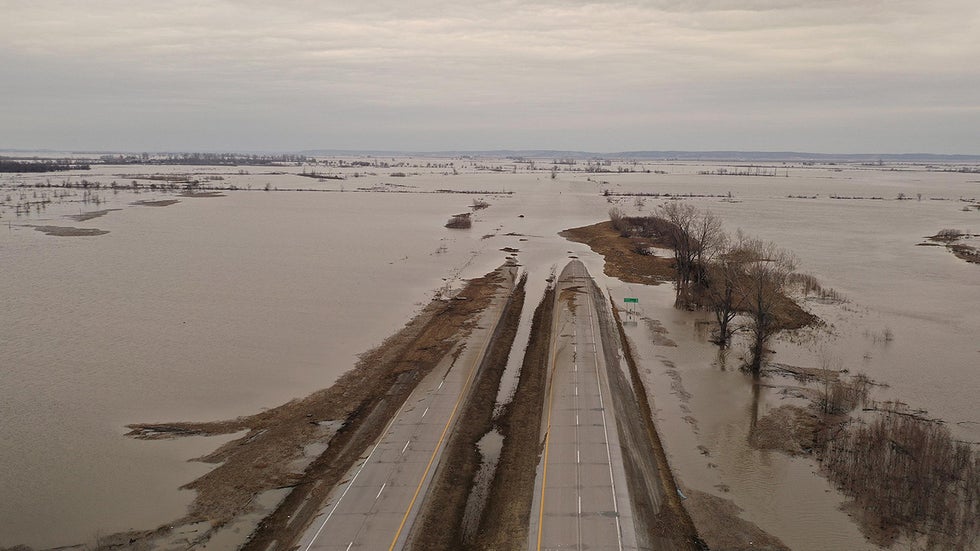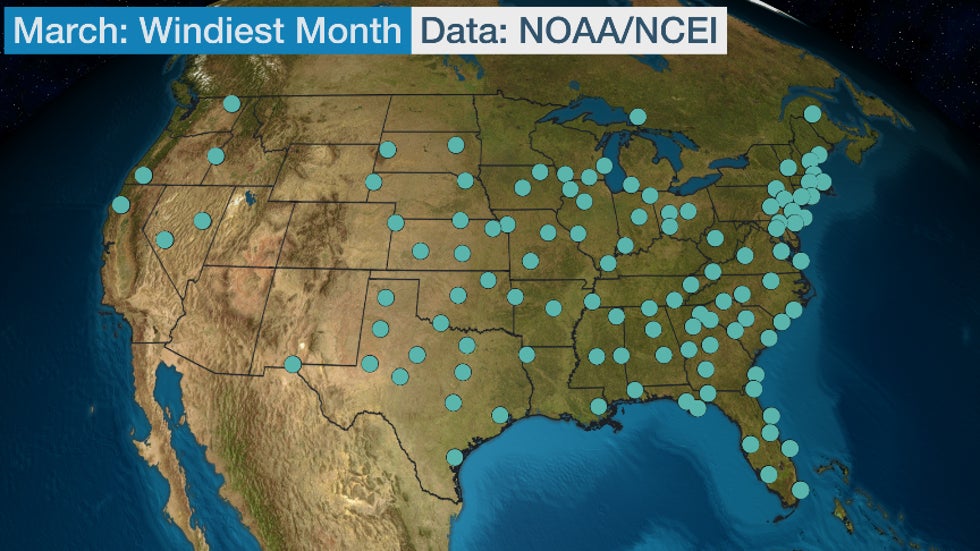Chris Dolce
Spring is notorious for producing a broad range of extreme weather, including major snowstorms, severe thunderstorms, flooding, big temperature changes and high winds.
Wide-ranging weather impacts occur from March through May because of a battle between warmer air trying to push farther north and the last of winter's cold plunging south out of Canada. That temperature contrast fuels a strong jet stream, and in turn, highly variable weather conditions.
The multi-faceted threats posed by storms in this transition season will be on full display later this week into the weekend. A slow-moving storm is expected to bring significant snow as well as the potential for flooding rain and severe thunderstorms to parts of the central U.S.
Here are five reasons spring is the most dynamic season.
1. A History of Major Winter Storms
Many parts of the country can still see major winter storms in spring, especially early in the season.
Heavy snowstorms commonly impact areas from the Rockies and the adjacent Front Range into the Plains and upper Midwest in spring. Sometimes these storms even produce blizzard conditions.
March 2018 proved major snowstorms can still occur in the East. The Eastern Seaboard was hit by four nor'easters in three weeks.
SPONSORED: 40% off outerwear at Back Country
One of the most notorious snowstorms on record – the 1993 Superstorm – struck the South and East in the second week of March.
March and April are actually the snowiest months of the year in the Rockies and High Plains. Additionally, many cities across the nation's northern tier don't see their average last measurable snow until April.
 The colors of each dot correspond to the month of the season's average last measurable snow.
The colors of each dot correspond to the month of the season's average last measurable snow.2. Tornado Threat Peaks
Tornado outbreaks are probably the weather event most often associated with spring.
Tornado activity in the Lower 48 begins to increase in March before peaking in April, May and June. Those are the core months for tornadoes, but they can occur at other times during the year.
March averages the fewest tornadoes in spring, with 83 per year. That average increases to 194 in April and 281 in May, based on the period from 2000 to 2019.
The area of highest tornado risk in spring shifts from the Deep South in March toward the Plains and Midwest from April into May. That follows the northward migration of the jet stream further into spring.
 Typical tornado risk area in March, April and May.
Typical tornado risk area in March, April and May.3. Spring Floods
River flooding often occurs in spring, particularly from the Plains and Midwest into parts of New England.
A sharp warmup in an area with significant snowpack during spring can quickly cause melting, allowing rivers to rise over their banks.
The worst flooding happens when bouts of heavy rain move across an area where the ground is already saturated from winter snowmelt or rain. Since the ground cannot absorb any of the rain, serious flooding can occur and potentially inundate city streets and even homes.
An extreme example of this happened in March 2019 when heavy rain from a bomb cyclone in combination with melting snow produced a flooding disaster in parts of the Plains and Midwest. NOAA estimated total damage from this historic flood event at $10.8 billion. It was one of the nation's costliest inland flood events on record.
Flash flooding is also an increasing threat in spring as thunderstorms become more numerous. Thunderstorms can produce rainfall rates of more than an inch per hour. Major flash flooding can occur if that heavy rain persists for several hours at a time in a particular area.
 Floodwater covers Highway 2 on March 23, 2019, near Sidney, Iowa. Heavy rain and snowmelt from the March 2019 bomb cyclone caused major flooding.
Floodwater covers Highway 2 on March 23, 2019, near Sidney, Iowa. Heavy rain and snowmelt from the March 2019 bomb cyclone caused major flooding.4. Temperature Swings
Spring is also known for its changing temperatures since teases of warmth are often taken away in an instant.
This is particularly the case in March and April when strong low-pressure systems moving through the central and eastern states draw warm air ahead of them into the northern tier of the country. That could result in a brief couple of days with some enjoyable warmth.
But an inevitable cold plunge typically arrives after the storm departs and takes away the brief glimpse of spring temperatures.
The atmosphere becomes less prone to wild temperature swings later in spring and allows for longer-lasting periods of warmer weather.

5. A Windy Time of Year
Gusty winds often accompany potent spring storms before, during and after their passage through the Lower 48.
The windiest time is early spring. March is the windiest month for many cities from the Plains to the East Coast.
Sometimes those winds can contribute to blowing dust in the Southwest and Plains states.
 Cities where March is the windiest month, or tied with up to two other months of the year.
Cities where March is the windiest month, or tied with up to two other months of the year.The Weather Company’s primary journalistic mission is to report on breaking weather news, the environment and the importance of science to our lives. This story does not necessarily represent the position of our parent company, IBM.
The Weather Company’s primary journalistic mission is to report on breaking weather news, the environment and the importance of science to our lives. This story does not necessarily represent the position of our parent company, IBM.

No comments:
Post a Comment